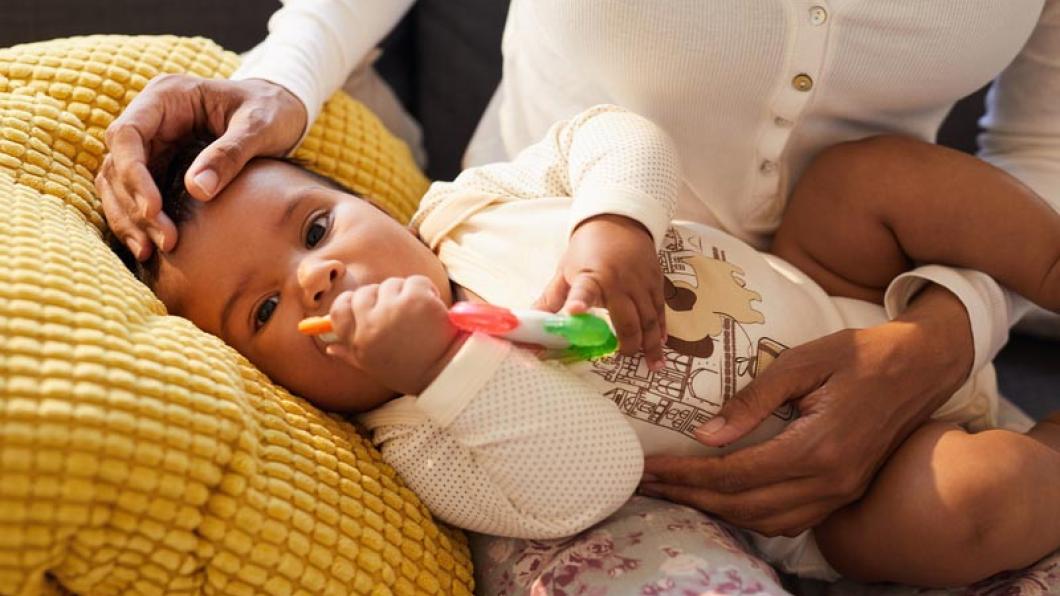
Disabled Ontario women face dangerous gaps in pregnancy care
By Louise Kinross
Disabled women account for one in eight pregnancies in Ontario, yet a report that combines the findings of 18 population-based and qualitative studies reveals troubling disparities in health outcomes and care experiences for this population and their babies.
In pregnancy and after birth, “People with disabilities were more likely to experience rare but serious physical health complications; more likely to visit the ER or to be hospitalized; more likely to have mental illness or to experience interpersonal violence; and their babies were more likely to be born preterm and small for gestational age,” says lead investigator Hilary Brown, associate professor in the Department of Health and Society at the University of Toronto Scarborough.
The report Equity and Inclusion in Pregnancy Care “is a call for the changes we want to see," Hilary says. "Our data shows many people with disabilities experience inequities in their pregnancy care in Ontario."
Researchers from U of T, the Institute for Clinical Evaluative Sciences, and CAMH analyzed health records of pregnant Ontario women between 2010 and 2020, including 148,000 women with a range of disabilities like spina bifida, deafness, autism, and intellectual disability.
“The complications we saw could be avoided through better care, or managed better if they were identified earlier, which means we need more comprehensive care and flexibility within the system for people who need more intensive care,” Hilary says.
Qualitative interviews with women include harrowing accounts of ableism and inaccessibility: doctors assume patients want abortions; a deaf woman delivers her baby with no sign-language interpreter; NICU staff don’t orient a blind mother to the equipment her baby is hooked up to, so she’s afraid to touch the baby; a woman with a physical disability is not shown ways to adapt breastfeeding; and mothers decline public health nurse visits because a medical environment of judgment makes them fear their baby will be taken away.
“The disparities are indicative of a system that wasn’t set up to address the needs of people with disabilities,” Hilary says.
Women with disabilities have been invisible in Canadian pregnancy data. “The Statistics Canada disability survey doesn’t ask questions about reproductive health or pregnancy, and big national surveys on pregnancy don’t include disability,” Hilary says. “That’s because of a historical oversight where we don’t think about disability and pregnancy in the same space.
"That relates to a long history of institutionalization and involuntary sterilization and eugenics, which has this trickle-down effect of negative attitudes about disability and sexuality. One of the biggest reactions we got when we began this research was: 'Pregnancy can’t be that common in people with disabilities.' That’s why we wanted to look at pregnancy rates, to dispel that assumption.”
The scientists looked at disabled women’s health prior to conception, noting they were more likely to live in poor neighbourhoods, to have chronic conditions, to have depression and anxiety, and to have a history of ER visits related to interpersonal violence.
“These are well-known risk factors for pregnancy complications,” Hilary says. “Preconception health is important to understand how likely someone might be to have complications, and what sorts of supports and resources they may need. Knowing this population has risk factors shows us that a lot could be done before pregnancy to better support these people. It could be through social policy to reduce poverty or better access to health care to identify and manage chronic conditions. We want these women to enter pregnancy in the best possible health.”
The scientists note that some women reported accessible, respectful care, but “it was a patchwork type of situation that depends on how knowledgeable a particular provider is,” Hilary says. “Accessible care should not be on a person-by-person basis. All pregnancy care should be accessible.”
The report recommends more frequent, or longer, prenatal visits for disabled women so doctors can better assess their needs, and multidisciplinary care. “We heard about people who had an obstetrician and a rheumatologist and a neurologist, but those providers didn’t communicate well with each other," Hilary says. "That led to lots of gaps and breakdowns in communication and the person feeling they were the string holding everything together. There needs to be an explicit effort to communicate and coordinate care within the medical system, and also between the health and social service sector.”
The scientists call for sweeping systemic change. “This is not a point-of-care type of fix,” Hilary says. Interviews with clinicians revealed they had little medical training related to disability and no resources to draw on. “When we know 25 per cent of the population has a disability and one in eight pregnancies are to people with a disability, that’s a huge oversight. We know there’s a lot of interest in equity, diversity and inclusion in medical schools, but so far it hasn’t covered an understanding of disability and ableism.”
In order to beef up clinician education “we need the political will to make funding a priority,” Hilary says.
Of note, the Equity and Inclusion in Pregnancy Care report was funded by the U.S. National Institutes of Health, which put out a specific call for research on this population. No similar call has been issued by a Canadian funder.
In order to change the system, “We also need better social policy and equity for people with disabilities more broadly, so we have people with disabilities in leadership in government and clinical care,” Hilary says.
An easy-read version of the report, an executive summary, and the full report are available online.
Like this interview? Sign up for our monthly BLOOM e-letter, follow @LouiseKinross on Twitter, or watch our A Family Like Mine video series.